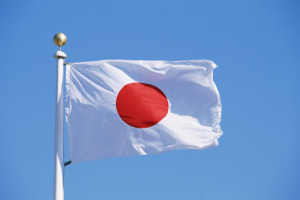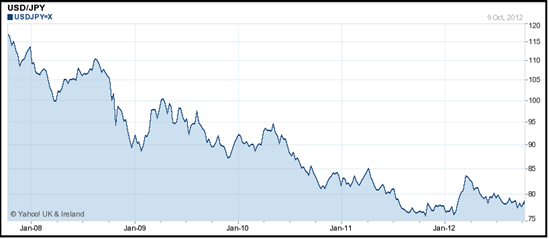 I have a friend who I go out cycling with. He tends to take me on lengthy 60km exploits, that take a big chunk out of my weekend, leaving Mrs Maven looking less than pleased.
I have a friend who I go out cycling with. He tends to take me on lengthy 60km exploits, that take a big chunk out of my weekend, leaving Mrs Maven looking less than pleased.
Usually, he’ll send me a text to fix up a time. If I haven’t replied to that within 5 minutes … he’s on the phone. If I can’t make that time, he’ll have a string of alternatives … there’s just no wriggling out of it.
He’s like a dog with a bone … and at 8am on a Sunday morning, as we’re firing along the deserted country lanes, I’m always glad that he’s dragged me out.
We all need people like that to keep us on our toes.
Someone who I suspect is similarly tenacious is the newly appointed Japanese economy minister, Seiji Maehara.
However, Maehara’s obsession isn’t cycling – it’s monetary intervention!
(I know, you thought the cycling obsession was weird!)
Maehara is brand new to the job, and he’s on a mission to get the Bank of Japan to do what he wants.
Here’s what he said when he came into office: “If my schedule permits, I want to attend the BOJ’s meetings as much as possible. At them, I will convey the view of my ministry alone, which is based upon my thinking.”
You can imagine how much they’re loving having him there!
To put this into context – it’s very unusual for the economy minister to be at these meetings (none of his predecessors over the past 10 years or so have bothered to attend).
He hasn’t persuaded them yet … but this guy is only just warming up …
This week he’s had the platform of the G7 finance meeting in Tokyo.
Why’s he so excited about monetary intervention?
The back story to this is that the Yen has been seriously over-valued for a long time now. This chart shows how it’s fared against the dollar since 2008 – as you can see, we’re now getting around 78 Yen to the dollar, compared to around 115 back then.

The relative strength of the Yen has been a serious blow to Japan’s export-driven economy. Japanese goods are becoming more and more expensive to foreign buyers.
But this strength in the Yen isn’t driven by a strong Japanese economy – it’s been driven by the Euro crisis, and by the simple fact that no one really wants dollars. The Yen is a safe haven.
With a distinct lack of strongly trending charts over recent years, the USDJPY has proved quite a goldmine for traders shorting this market.
So, should we be shorting the Yen? Well, not if there’s any chance that Maehara might get his way …
So, what’s a Japanese economy minister to do?
Recent history shows that the Bank of Japan acts when the value of the Yen dips below 77 (to the dollar), so many traders will view this figure as a BUY point. Each time the Bank of Japan has stepped in with intervention, buying up government bonds and other assets, in recent years, it’s succeeded in causing a brief rally on the USDJPY chart. However, that’s all it’s been – the decline has continued.
The problem has been that this is what’s called “solo intervention” – i.e. the Bank of Japan is acting alone. This is seen as a “dirty tactic” by many other nations – trying to falsely devalue your currency in order to boost your export market. (It’s what the US has been grumbling about China doing for years.) And the harsh truth is that it rarely has any lasting effect. As the chart above shows.
So, what Maehara, and the new finance minister Jojima, want to do is get the G7 on board. And that’s exactly what’s been going on behind closed doors at the meeting this week.
If the G7 agree, which could see Japan buying up European bonds (not a bad thing for the Eurozone), then we can expect to see a rally on the USDJPY charts.
However, if they say “no”, then the chart will be heading downwards.
Most pundits expect a big, fat “no” from the G7 -they feel that with the global downturn and the Euro crisis, they’ve bigger concerns than Japan’s struggling export market.
That said, there’s a history of Japan stepping in with intervention anyway when the value of the dollar against the Yen falls below 77 – so there could be a back-up plan. In fact, it’s the thought that the Japanase may act on their own that has caused the dollar to rally against the Yen in the past 24 hours.
Whatever happens – things are definitely kicking off in the USDJPY at the end of this week …
